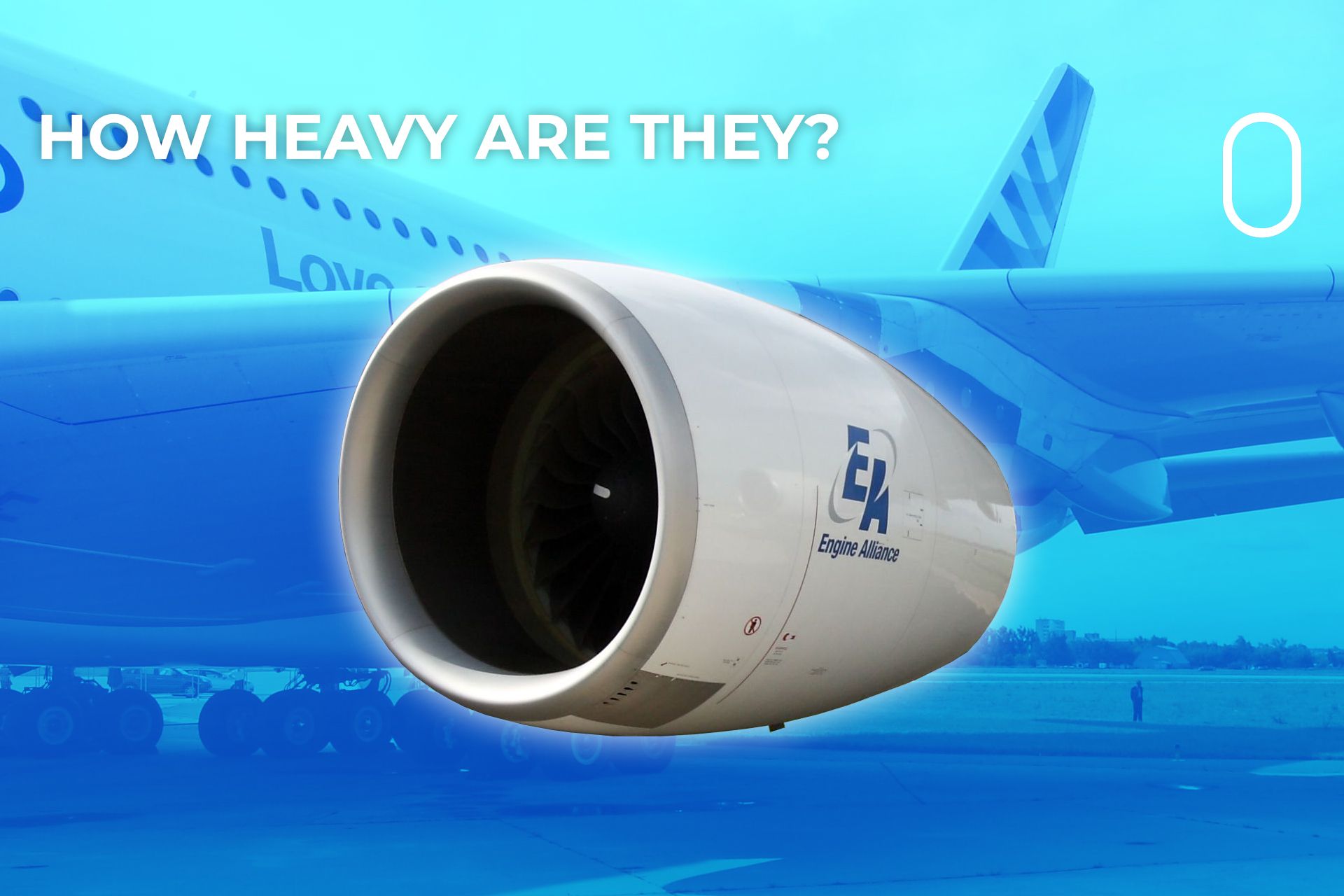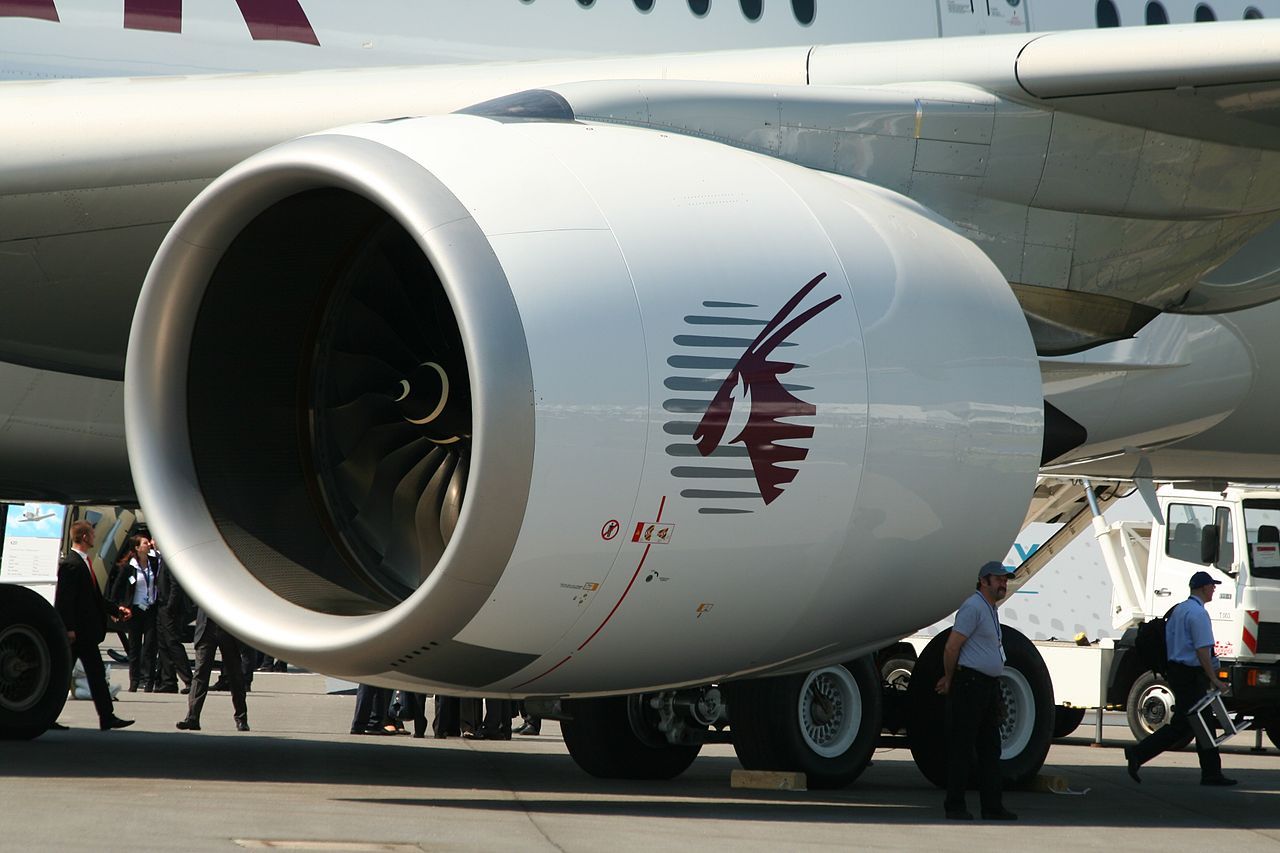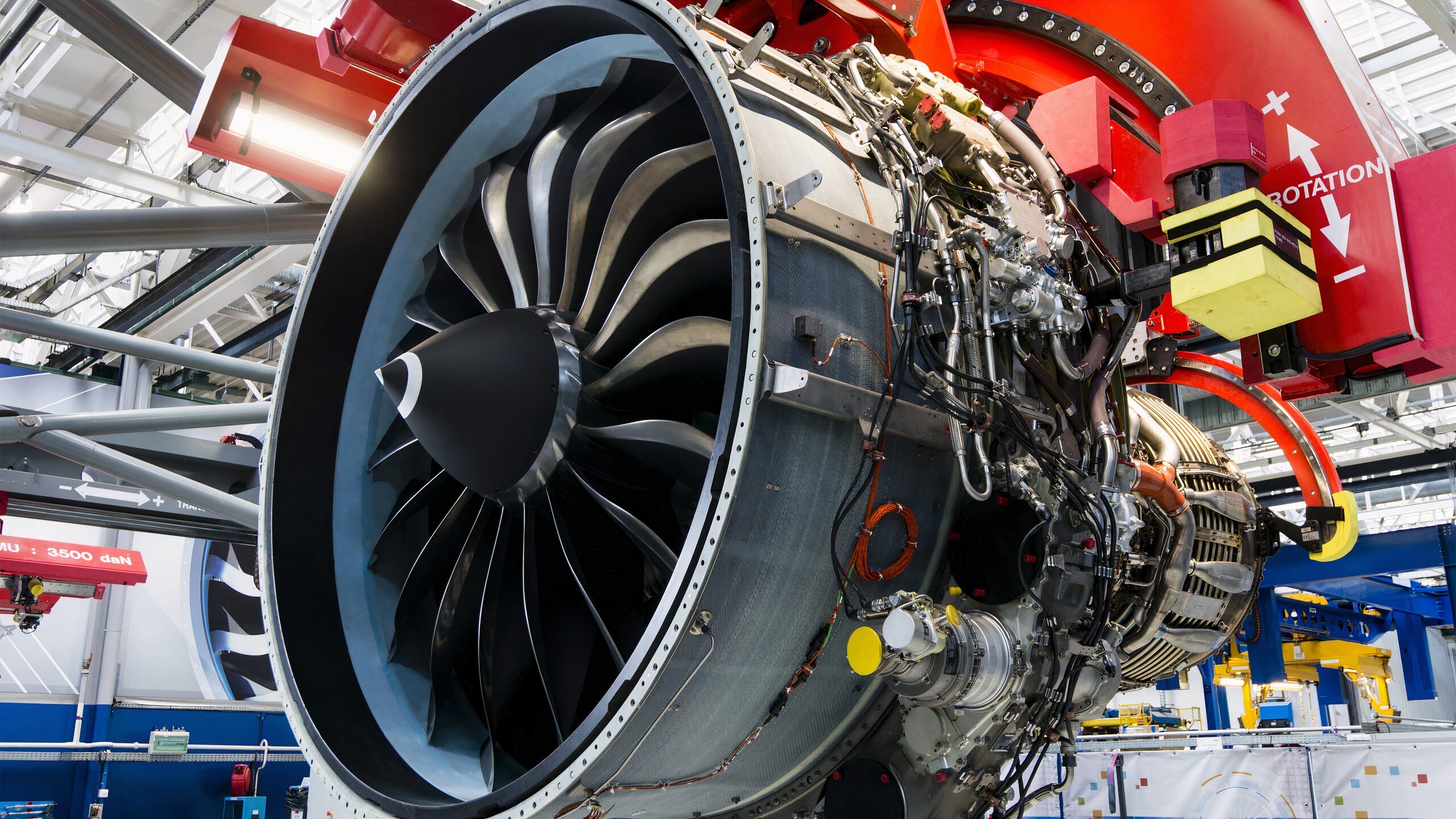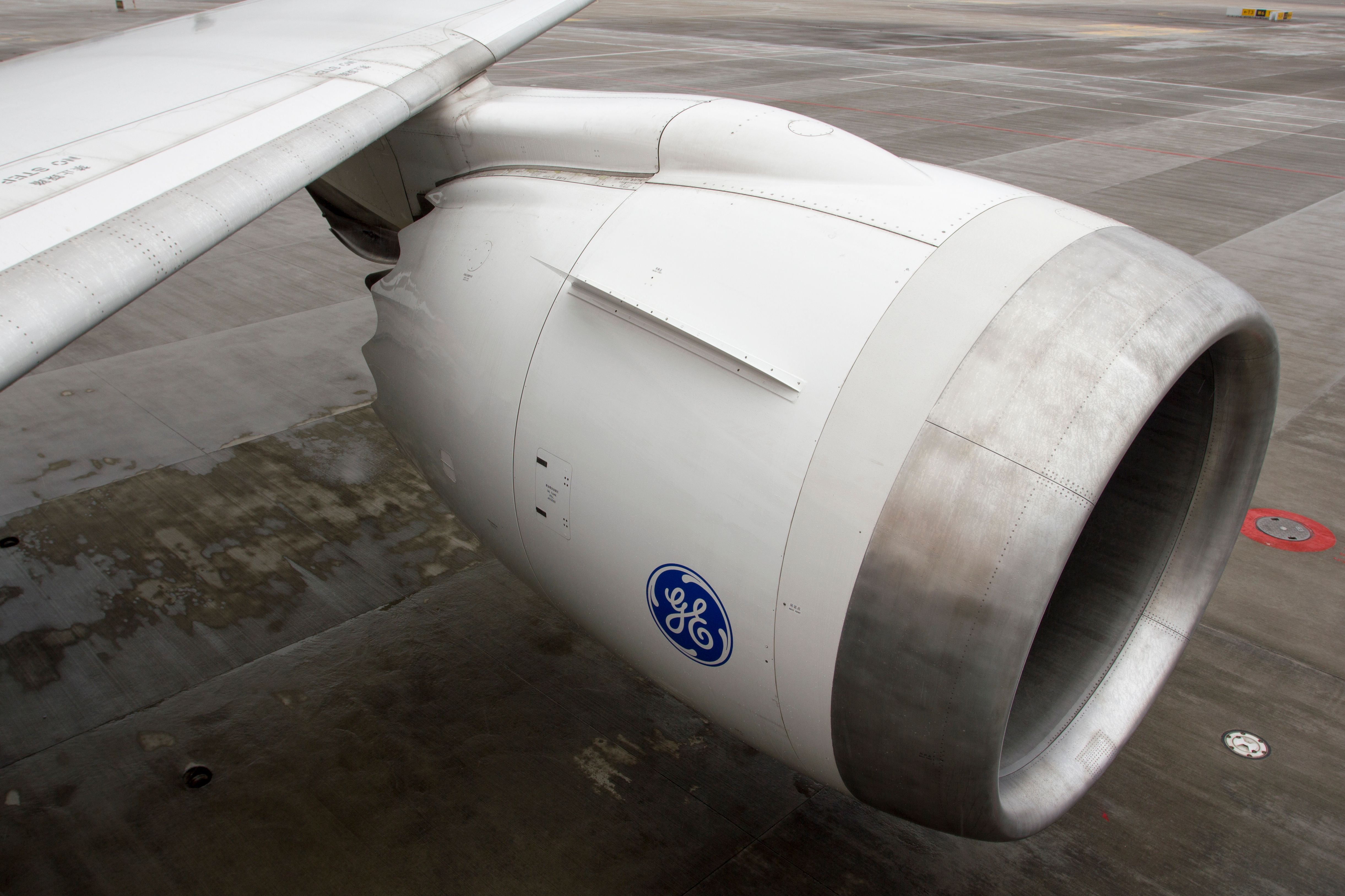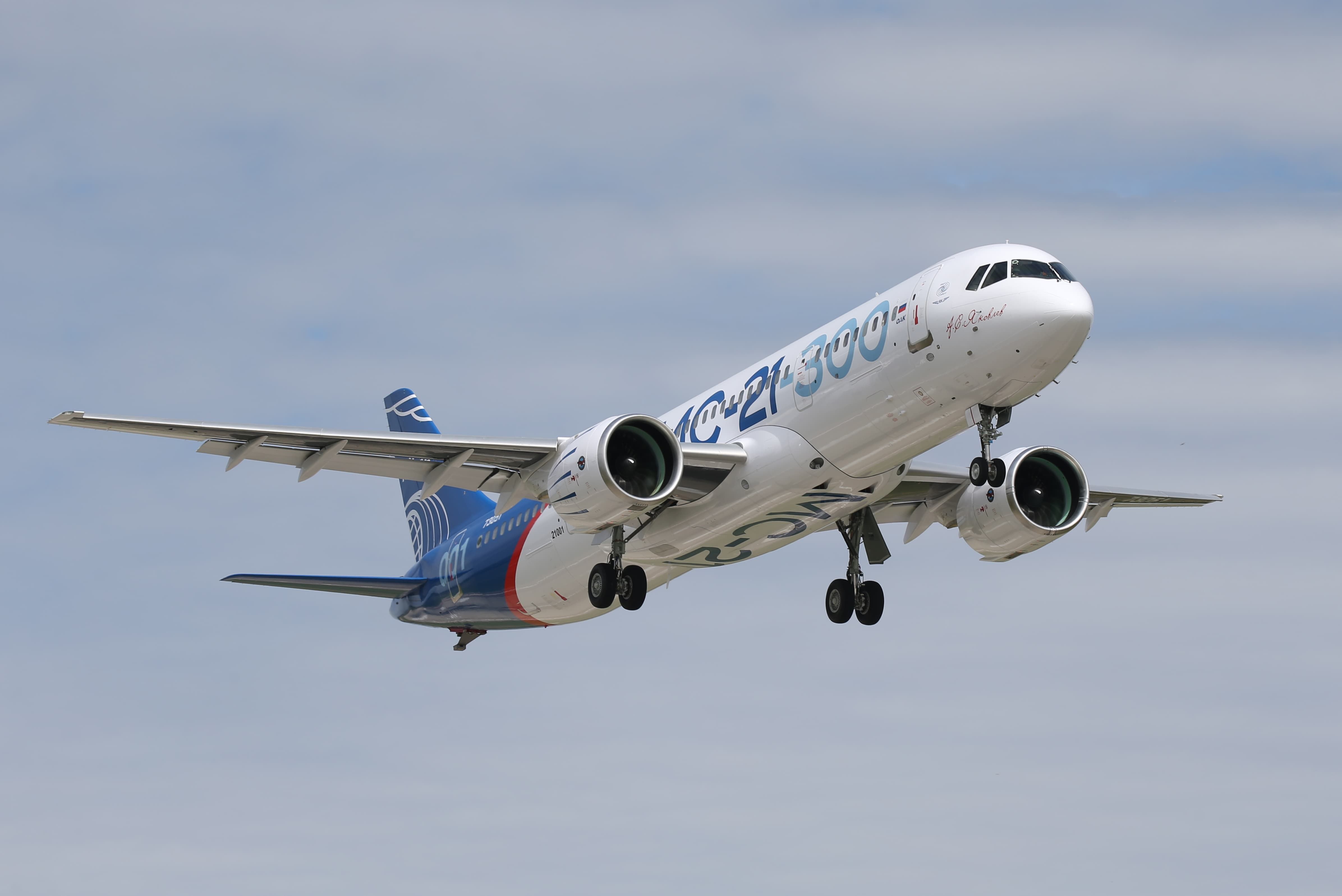Summary
- Jet engine T/W ratio, at 5-6, affects engine efficiency & design.
- Engines from different manufacturers power various aircraft models.
- Russian aviation struggles due to Western sanctions affecting engine availability.
Turbofan engine engines sit at the cutting edge of technology and can last for up to 10,000 engine flight cycles (EFC). Only a select group of countries can design and manufacture jet engines (the US, UK, France, Russia, and China). Still, even fewer are making jet engines for Airbus and Boeing commercial airliners. All Airbus and Boeing commercial aircraft are fitted with General Electric, Pratt & Whitney, or Rolls-Royce engines.
Thrust-to-Weight (T/W) Ratio
The engine thrust-to-weight ratio is the ratio of the maximum takeoff thrust the engine can produce to its dry weight. Manufacturers of modern engines aim to strive for large thrust-to-weight ratios. While the ratio is based on the engine performance requirements, larger T/W ratios enable an efficient engine design.
|
Commercial GE Jet Engine: |
Thrust: |
Thrust to weight ratio: |
|---|---|---|
|
GE CF6-80: |
40,000-70,000 lbs (16 thrust ratings): |
various |
|
GE90: |
115,000 lbs |
5.98 |
|
GE9X: |
110,000 lbs |
5.2 |
|
GEnx: |
76,000 lbs |
5.62 |
The T/W ratio of most modern jet engines is between 5 and 6. This means that an engine that produces 30,000 lbs of thrust and weighs 6,000 lbs, the T/W ratio would be 5. Similarly, a known T/W can be divided by the maximum takeoff thrust to determine the engine’s dry weight.
So, how much do some common engines weigh?
Narrowbody engines are smaller and produce much less thrust than their widebody counterparts. While the T/W of narrowbody engines may not be too different from widebody engines, the dry weight of the engine is much less. The CFM International’s (CFMI) CFM56-3 engine weighs approximately 4,300 lb (2,000 kg). CFM International is a joint venture between GE and France’s Safran.
Several variants of these engines power the Boeing 737 Classics, 737 NGs, and the Airbus A320 family. The CFM LEAP engines powering the Boeing 737 MAX and the Airbus A320neo family are significantly heavier, ranging between 7,000 – 8,700 lbs (3,200-4,000 kg).
Photo: CFM International
|
Select commercial jet engines: |
Weight: |
Example aircraft powered: |
|---|---|---|
|
CFM International CFM56-3: |
Approx. 4,300 lbs |
A320s, older Boeing 737s, Boeing KC-135R Stratotanker, DC-8-70 |
|
CFM LEAP: |
Between 7,000 and 8,700 lbs |
Boeing 737 MAX, Airbus A320neo |
|
GE CF6-80: |
9,500-9,900 lbs |
Boeing 747 (exclude 747-8), Boeing 767, A330ceo, C5-M Super Galaxy |
|
Rolls-Royce Trent XWB: |
16,600 lbs |
A350 |
|
GE90: |
19,300 lbs |
Boeing 777 family |
|
GE9X: |
21,200 lbs |
Boeing 777X |
|
GEnx: |
14,000 lbs |
Boeing 787 Dreamliner, Boeing 747-8 |
The General Electric CF6-80 engines that power the iconic Boeing 747s (except the 747-8) weigh anywhere between 9,500–9,900 lb (4,300–4,500 kg). The CF6-80 engines offer 16 different thrust ratings and power a wide range of commercial and military aircraft. Other notable applications of these engines are Airbus A330ceo, Boeing 767, Boeing VC-25 (aircraft for the United States President), and Lockheed Martin C5-M Super Galaxy.
The GEnx engine that powers the Boeing 787 Dreamliner series weighs approximately 14,000 lb (6,400 kg). With a maximum takeoff thrust of 76,000 lb (for the 787-10), the T/W of the engine is 5.62. It is noteworthy that the GEnx engine also powers the Boeing 747-8.
Photo: Tada Images | Shutterstock
With four engines on the 747 and lower thrust requirements, the engine weighs approximately 12,400 lb (5,600 kg). The Rolls-Royce Trent XWB engine that powers the Airbus A350 aircraft weighs approximately 16,600 lb (7,500 kg). The engine produces 97,000 lb of thrust and has a T/W ratio of 5.82.
The GE90 engine that powers the Boeing 777 aircraft weighs approximately 19,300 lb (8,700 kg). The engine produces 115,000 lb of thrust and has a T/W ratio of 5.98. The GE9X engine that powers the Boeing 777X (not in commercial service yet) weighs a whopping 21,200 lb (9,600 kg). The engine produces 110,000 lb of thrust and has a T/W ratio of 5.2.
Russian jet engine woes
Since the full-scale Russian invasion of Ukraine, Russia has been placed under severe Western aviation sanctions, which have had a devastating effect on the Russian aviation industry. The Russian Yakovlev MC-21 was intended to be powered by the Aviadvigatel PD-14 turbofans or Pratt & Whitney PW1000G engines. But now, it is impossible for Russia to receive Western engines and a slew of parts.
|
Jet engine market share (Boeing, Airbus): |
|
|---|---|
|
General Electric (and Safran in CFM International): |
55% share |
|
Pratt & Whitney: |
26% |
|
Rolls-Royce: |
18% |
|
Others (e.g. Safran, Aviadvigatel): |
Non-Boeing/Airbus passenger aircraft |
Russia is now forced to substitute engines and other parts in the MC-21, which is expected to make the jet 6 tons heavier while significantly reducing its range.
Photo: Yakovlev
The same is true of the SuperJet 100, which was built with the Franco-Russian PowerJet SaM146 turbofan. However, it is also impossible for Russia to receive more of these engines, and any future jets will need to be fitted with inferior Aviadvigatel PD-8 Russian engines (currently in testing). The Aviadvigatel PD-14 jet engine family has thrust-to-weight ratios of between 4.64 and 5.25.
What are your thoughts on the weight of the aircraft engines? Tell us in the comments section.

